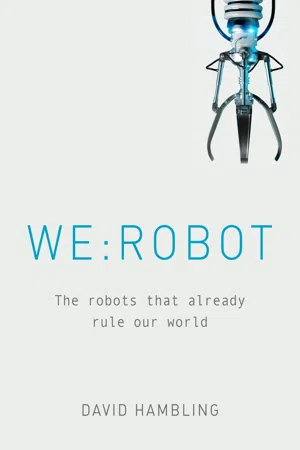ROBOTS
BEYOND
ROBOTS BEYOND
While many of the robots already in service are awesome, they still fall a long way short of the robots dreamed of in science fiction – Commander Data, Terminator, the inhabitants of Westworld. But researchers are working hard to bridge that gap.
Robots do not need to look like humans, so most of them have functional shapes, like industrial robot arms. But when machines work in a human environment, opening doors and negotiating staircases, a humanoid form can make sense. Examples include Atlas, Boston Dynamics machine for human-type mobility, NASA’s Robonaut for space missions alongside humans, and the US Navy’s SAFFiR shipboard firefighting robot. While they are not quite Olympic athletes yet, they have come a long way in a few years. Robot bodies may not always be halting, inferior copies of human ones.
Robots are natural explorers. Unmanned systems were the first into space and machines such as NASA’s Curiosity Rover are digging into the surface of Mars in search of life, decades before humans are likely to reach the Red Planet. The Flying Sea Glider can explore the oceans for months on end, while the Vishwa Extensor, a remote-controlled robotic hand for deep-sea divers, operates at greater depths than any human.
The human form is not the only one researchers want to copy. Dolphins can swim faster than submarines, and even leap clean out of the water. The best way to follow suit was to build a robot which mimicked nature’s design – the amazing Dolphin, first of a new type of efficient swimming robots. The Ocotobot is a robot octopus, and although the resemblance is whimsical rather than practical, it highlights the technology of ‘soft robotics’. Just as the boneless octopus is an alternative way of building a mobile, dextrous body rather than vertebrates like us, soft robotics explores the possibilities of machines with no rigid components.
Exploration is the story of sheer human persistence against the elements. A sea voyage lasting several months is an epic calling for tremendous endurance – unless you are a machine, in which case it is business as usual. Extremes of temperature, or even being underwater for prolonged periods, mean nothing to robots that are natural submariners. The Flying Sea Glider can fly for prolonged periods as well as swim. The Vishwa Extensor, designed as a remote-controlled robotic hand for human deep-sea divers, might end up equipping all sorts of unmanned craft.
Space is a better habitat for machines than humans. Unmanned systems were the first into space and the first to land on the Moon ahead of the astronauts. Machines such as NASA’s Curiosity Rover are digging into the surface of Mars in search of life, and continue to work there decades before humans set foot on the red planet.
The Kilobot might seem like the least impressive machine of all, with less capability than a clockwork toy. It is in fact a research platform for testing software to control swarms of cooperative robots that can work together. This technique may ultimately dominate all forms of robotics, whether they are cleaning windows, performing surgery or working in fields or factories.
Nanobots are so far confined to science fiction: microscopic robots working in teams of millions to create or destroy. Nanobots in our bloodstream may one day detect and eradicate tumours before they can be a threat; others might tear down old buildings and reassemble them as new houses, efficiently recycling every particle of metal, stone and plastic. Technology has moved slower in this area than some expected, but that does not mean they are not coming.
This book gives some idea of what robots can already do, and what they will be able to do in the near future, based on what is already in the public domain. Government laboratories, and giant corporations like Google, may already have more advanced machines under wraps. As to where robots will go next, there are no fixed limits.
One thing we can say is that the technologies developed by individual programs – manipulators, mobility, swarming or social interaction software – will be combined to create more effective robots. Expect to see dolphin-like machines with hands like the Vishwa extensors, or Roombas with swarming software that allow several to cover a large house efficiently. Realistic but essentially static humanoids like Sophia may be matched with highly mobile bodies like Atlas to create a true android.
The other great unknown is artificial intelligence (AI). Ray Kurzweil, Google’s director of engineering, anticipates that computers will exceed human intelligence in the 2040s. When that happens, current machines will look as primitive as da Vinci’s mechanical knight.
Robots may be changing the world now, but they have barely started.
ROBONAUT 2
Height | 2.4m (7.9ft) |
Weight | 150kg (330lb) |
Year | 2011 |
Construction material | Composite |
Main processor | PowerPC proces... |

